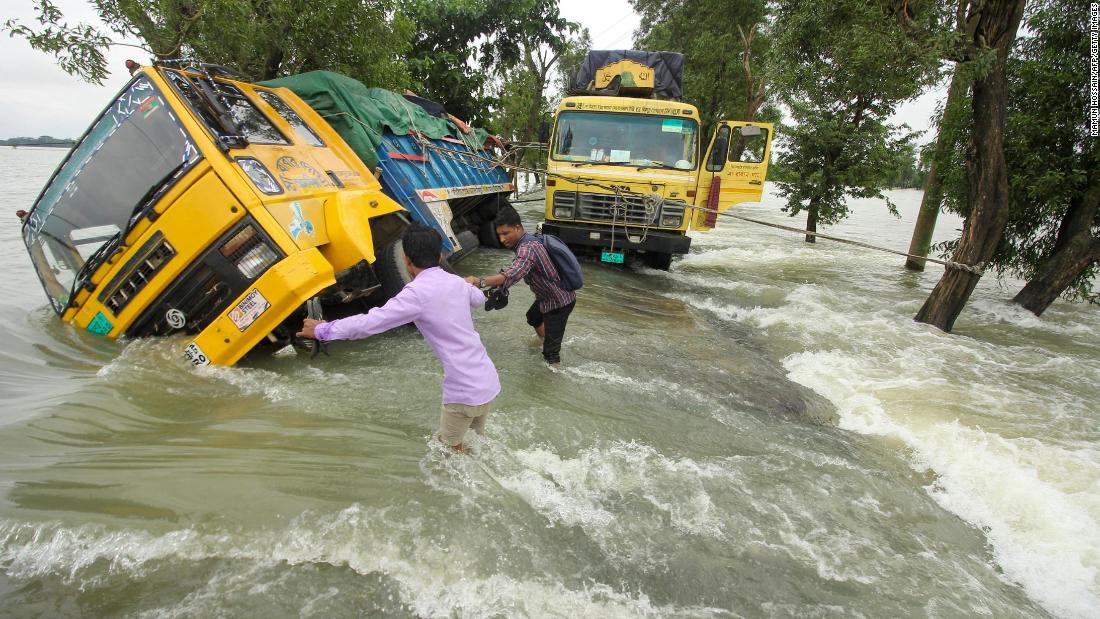
In India, at least 48 people have died since June 14, after heavy rains battered the northeastern state of Assam, according to its disaster management authority, triggering landslides and causing river banks to swell. More than 5.5 million people have been affected in the state alone, the authority added.
Assam’s Chief Minister, Himanta Biswa Sarma, on Tuesday visited one of the 1,687 relief camps, housing more than 260,000 displaced people in the state.
In the nearby state of Meghalaya, at least 25 people have died since June 9, with 11 still missing and 22 more injured, according to state officials.
Video broadcast on local television showed people in affected cities wading waist deep in muddy water and streets turned into rivers, with vehicles submerged underwater.
In neighboring Bangladesh, flooding-related incidents, including electrocutions and landslides, have killed at least 22 people, according to officials.
As many as 4 million people, including 1.6 million children, have been stranded by the flash floods, according to UNICEF.
“Children need safe drinking water right now. Preventing deadly waterborne diseases is one of several critical concerns,” Sheldon Yett, UNICEF Representative to Bangladesh, said in a statement Monday.
The downpour has caused catastrophic flooding in the northeastern Sylhet region, local officials said.
“The flooding is the worst in 122 years in the Sylhet region,” Atiqul Haque, Director General of Bangladesh’s Department of Disaster Management, told Reuters on Monday.
Health facilities have been inundated in Sylhet, while children were at heightened risk of drowning, according to UNICEF.
More than 36,000 children have sought refuge in overcrowded shelters, together with their families, UNICEF said.
Schools have been forced to close and exams have been canceled, further impacting their education following months of closures due to the coronavirus pandemic, it added.
CNN’s Esha Mitra contributed reporting.
